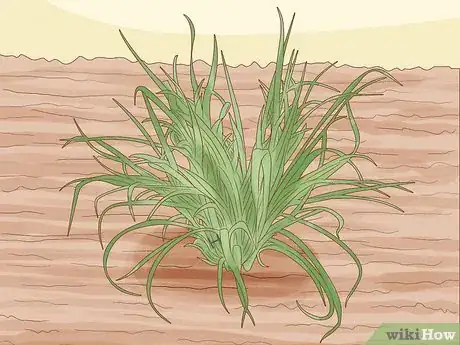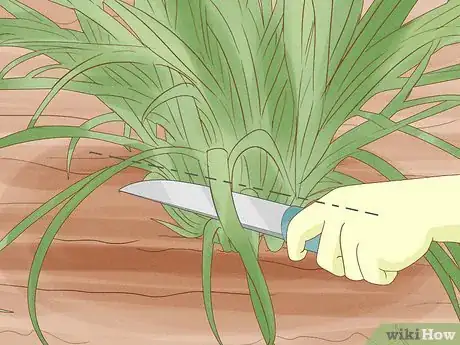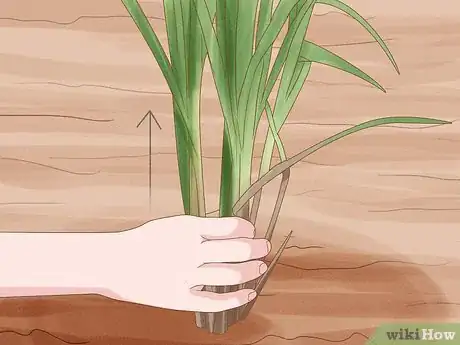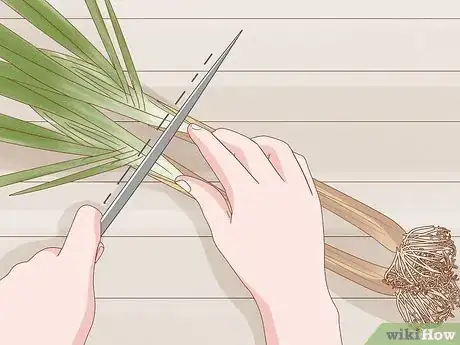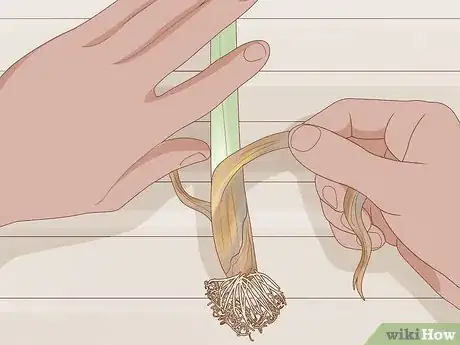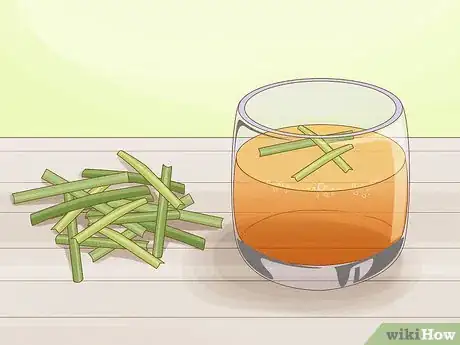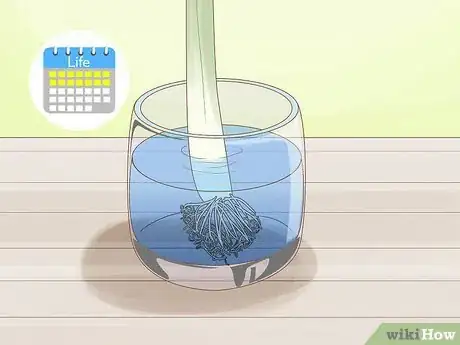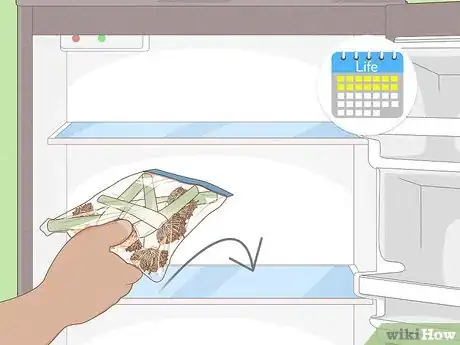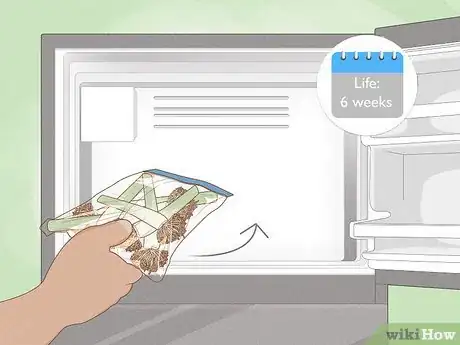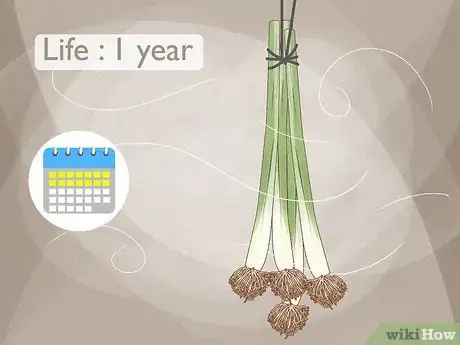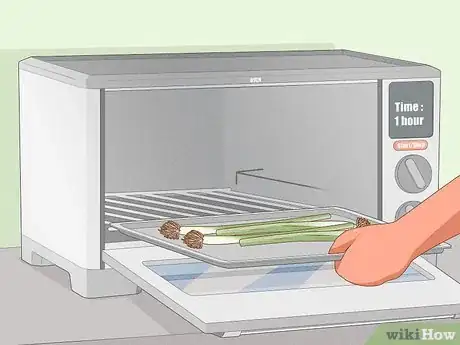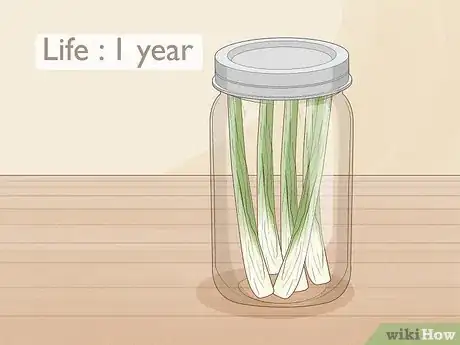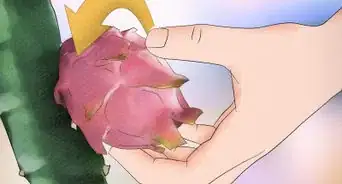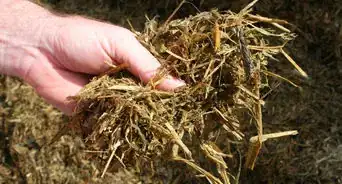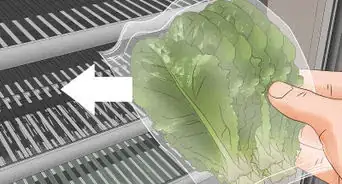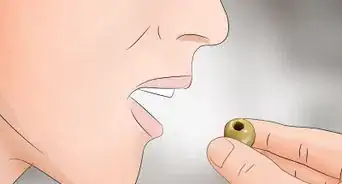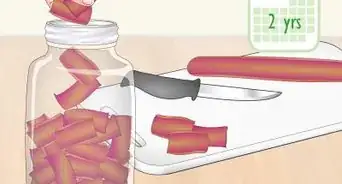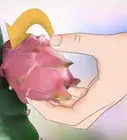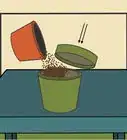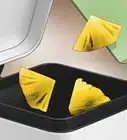This article was co-authored by wikiHow staff writer, Kai Hynes. Kai Hynes is a Writing Fellow from San Jose, California, currently residing in Portland, Oregon. In addition to writing for wikiHow, Kai works as a theatre actor and performance artist. Kai holds a BA in English and Theatre from The University of Portland.
This article has been viewed 5,755 times.
Learn more...
Lemon grass is a plant native to tropical regions of the world, often used in Southeast Asian cuisines for its flavor and fragrance. The stems of this versatile crop can be chopped up and cooked, while its leaves can be used for making tea or broth. This article is full of useful tips for knowing when and how to harvest lemon grass, as well as how to store it.
Steps
Harvesting Lemon Grass
-
1Prepare to pick lemon grass when the stems are .5 inches (1.3 cm) thick. Lemon grass can be harvested during any part of the year, as long as the stems are thick enough.[1] Check the stems at the base of the stalks to see if any are ready for harvesting.
-
2Cut stems off at their base. Use a pair of garden shears to cut the stem off at ground level. If you need to reach a stem that’s blocked by other stems, you can push the stems that are in the way to the side.[4]
- Lemon grass’ leaves are sharp, so it’s a good idea to put on gardening gloves to protect your hands from cuts.
- Only harvest up to ⅓ of the stems at a time. Allow cut stems to fully regrow to .5 inches (1.3 cm) thick before harvesting stems from the plant again.
Advertisement -
3Pull stems out by their base. If you don’t own tools for cutting the stem off, you can pull the stem out with your hands. Grab the stem from its base and pull it out of the ground with a twisting motion.[5]
- Once again, it’s a good idea to put on gardening gloves to protect your hands from the lemon grass’ sharp leaves.
- Don’t worry if you pull some of the roots out with the stem. The plant will regrow stalks as long as ⅔ of the stalks remain in the ground.
-
4Separate the leaves from the bottom 6–12 inches (15–30 cm) of the stalk. The leaves and stems of lemon grass stalks are generally used for different things. Use garden shears or a kitchen knife to cut the leaves off at their base.[6]
- You can choose to keep or discard the leaves depending on whether you want to use them for making tea or broth.
-
5Peel off the woody exterior of the stem. The bottom 6–12 inches (15–30 cm) of the stalk has a fibrous layer that is too tough to eat. Peel this off with your hands to reveal the tender white core of the stem, which is edible and used for cooking.[7] Try using them in the following ways:
- Finely chop the core like a scallion and add it raw to salads or soups.
- Mince the core and cook it as an aromatic, like garlic. Try using this to flavor marinades, stir-fries, and curry pastes.[8]
-
6Keep the leaves and exterior for tea or broth. Rather than throwing them away, try boiling the leaves and exterior of the stem. These parts are tough to eat, but they can still be used for their flavor and fragrance.[9]
- The leaves and exterior should be boiled for a minimum of 5 minutes. Strain the water and throw away the plant parts afterwards.[10]
- To get the most out of the leaves and exterior, pound them with a cooking mallet to release their aromatic oils.
- The leaves can be dried (in a process described in the next section of the article), but otherwise, the leaves and exterior don’t keep well in storage.
Storing Lemon Grass
-
1Place lemon grass stems in water for short-term storage. You can keep freshly harvested lemon grass stems in water if you’re planning on using them within the week. Stand the stems upright in a glass of water so their bases are submerged. As with many other herbs, this method will only keep them for a few days.[11]
-
2Store stems in the refrigerator for up to 2 weeks. If you’re looking for a slightly longer storage period, put your lemon grass stems in the fridge after tightly wrapping them in plastic wrap. They should stay fresh for 2 weeks.[12]
- If you don’t have plastic wrap, a plastic bag should work. Make sure to remove all excess air first.
-
3Store stems in the freezer for up to 6 months. Freeze your lemon grass if you want to keep it for longer than a few weeks. Put the stems in a freezer bag and keep them for up to 6 months.[13]
- If you’re low on freezer space, you can chop the stems into smaller pieces before putting them in a freezer bag.
-
4Air dry stems for 1-2 weeks. You can dry lemon grass to store it for up to 1 year. Gather freshly harvested stems into a bunch of 5-6 stems and tie them together with a string. Tie the bunch in an elevated position so that it’s hanging. Allow the bunch of stems to dry like this for 1-2 weeks, or until they feel crunchy.[14]
- Hang the bunch in a warm, dry, well-ventilated room, like a pantry or attic, while drying.
- Keep the bunch out of direct sunlight while it’s drying to prevent it from getting too dry and losing its flavor.
- You can also air dry lemon grass leaves. Repeat the same process of hanging up leaves in bunches and drying them out for 1-2 weeks.
-
5Dry stems in the oven for 1 hour. This is an alternative way you can dry lemon grass stems. Preheat your oven to its lowest temperature. Lay stems apart from each other on a baking sheet. Place the baking sheet in the preheated oven for 1 hour, or until they look crispy.[15]
- This method is faster than air drying, but may cause the lemon grass to lose some flavor.
- If you’re worried your oven might get too hot, you can keep the oven door cracked open.
- This method doesn’t work as well with lemon grass leaves. If you want to dry the leaves, air drying is a better option.
-
6Keep dried lemon grass for up to 1 year. After you’ve dried your lemon grass stems, you can place them in a glass jar or other airtight container. Keep the jar or container in a cool, dark, dry place to best preserve the lemon grass’ flavor. You can keep dried lemon grass stems for up to a year.[16]
- You can break or grind the dried stems to fit them into a jar or container.
- You can store dried lemon grass leaves in a jar or container for up to 1 year as well.
- Crushed dried lemon grass stems and leaves are best used as loose-leaf teas or food seasonings.
References
- ↑ https://extension.usu.edu/yardandgarden/research/lemongrass-in-the-garden
- ↑ https://hort.extension.wisc.edu/articles/lemongrass/
- ↑ https://harvesttotable.com/lemon_grass/
- ↑ https://extension.usu.edu/yardandgarden/research/lemongrass-in-the-garden
- ↑ https://extension.usu.edu/yardandgarden/research/lemongrass-in-the-garden
- ↑ https://harvesttotable.com/lemon_grass/
- ↑ https://harvesttotable.com/lemon_grass/
- ↑ https://www.finecooking.com/ingredient/lemongrass
- ↑ https://harvesttotable.com/lemon_grass/
- ↑ https://www.finecooking.com/ingredient/lemongrass
- ↑ https://harvesttotable.com/lemon_grass/
- ↑ https://www.finecooking.com/ingredient/lemongrass
- ↑ https://www.finecooking.com/ingredient/lemongrass
- ↑ https://www.dryingallfoods.com/drying-lemongrass-at-home/
- ↑ https://www.dryingallfoods.com/drying-lemongrass-at-home/
- ↑ https://www.dryingallfoods.com/drying-lemongrass-at-home/
